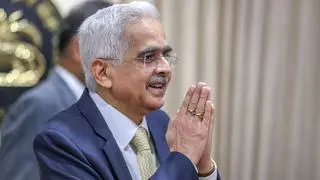It is a unique exercise, a legacy from the control era, that takes place every four years. Representatives of six union federations affiliated to major political parties such as the Congress, the BJP, the CPI, the CPM and the DMK sit down with executives of 20 private cement companies (operating over 100 units with an aggregate output in excess of 280 million tonnes) to hammer out a wage settlement. The outcome benefits close to 1.5 lakh employees.
The first such negotiation started in 1992 after decontrol of the cement industry. Six wage agreements have since been concluded. The last agreement expired on March 31, 2018 and talks for a fresh agreement begin today in Chennai. The highlight is the efficacy of this process — industrial peace has reigned uninterrupted for the last 26 years.
The man behind this effort has been the Vice-Chairman and Managing Director of India Cements, N Srinivasan. It all began when the industry was fully decontrolled in 1989. “We were left with two choices in 1992: either continue with an industry-wide settlement as before or allow individual companies to negotiate a settlement. With cement being a core industry, we opted for a collective settlement,” said Srinivasan who headed the Cement Manufacturers’ Association then. “It turned out to be a far-sighted move,” he added.
‘A privilege’
From then on, the industry has left it to Srinivasan to thrash out an agreement on its behalf every four years. “It is both a privilege and a responsibility,” he said on the faith his counterparts have reposed on him.
The industry has come a long way since the first settlement in 1992. Its capacity then was just 30 million tonnes. Now, it is almost 400 million tonnes. The first settlement saw a hike of ₹600 per month while the one that was executed in 2014 delivered an increase in excess of ₹6,000.
According to Srinivasan, it is ‘collective bargaining’ in its truest sense as the management and the Union sit across the table and negotiate a deal that is then signed in front of the Chief Labour Commissioner in New Delhi. Both sides have stayed committed to the agreement in letter and spirit over the years.
This exercise has ensured that over the years the industry’s wages have risen to be on par with what a sector such as steel pays.
What is interesting is that the outcome is respected even by those companies that are not part of the negotiations. “They sign a mirror-image agreement with their union based on what we have agreed,” said Srinivasan.
This year the negotiation will happen at a time when industry is facing challenging times. Capacity utilisation is low and not all regions are seeing good demand and prices. “Success [of this negotiation] will depend on the extent to which we can convince the Unions that situation is not rosy,” he said.







Comments
Comments have to be in English, and in full sentences. They cannot be abusive or personal. Please abide by our community guidelines for posting your comments.
We have migrated to a new commenting platform. If you are already a registered user of TheHindu Businessline and logged in, you may continue to engage with our articles. If you do not have an account please register and login to post comments. Users can access their older comments by logging into their accounts on Vuukle.